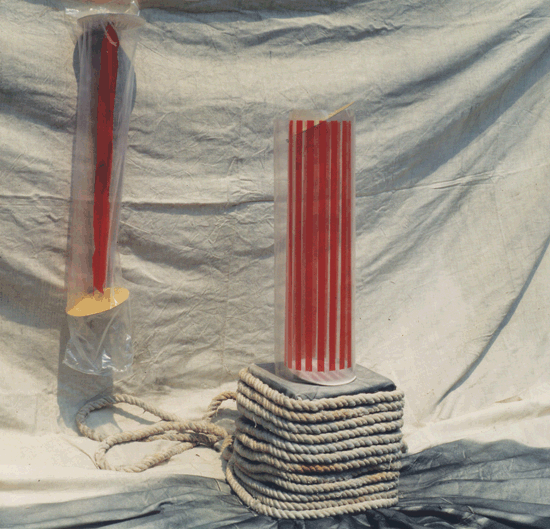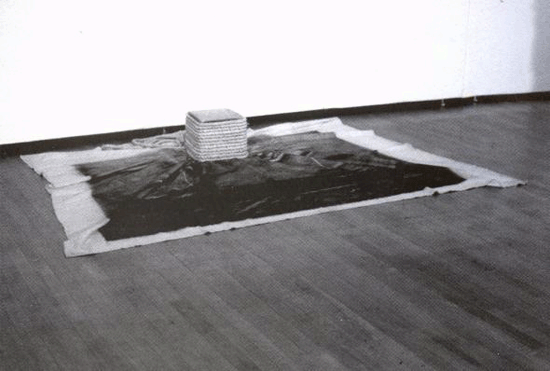Object & Installation

시각 Ⅰ, Ⅱ
1968, 280x46x46cm, 네온, 스텐레스 스틸, 한국 최초 테크놀로지 작품.‘종합미술대전’ (중앙공보관 화랑, 서울, 1968) 출품, 국립현대미술관 소장
<시각 Ⅰ, Ⅱ>는 붉은색과 푸른 색의 네온과 스테인리스 스틸을 사용한 한국 최초의 테크놀로지 작품이다. 서구에서는 댄 플레빈 (Dan Flavin)이 1961년 전기를 이용한 작품을 이미 시도했으나, 한국에서 라이트 아트의 선구는 강국진의 1968년 작품 <시각 Ⅰ, Ⅱ>였다. 제1차 경제개발 5개년 계획이 마무리되던 1967년, 서울이 대도시로 탈바꿈하면서 화려한 네온 사인이 도시의 거리에 활기를 불어넣기 시작했다. 그는 새로운 매체인 네온과 스테인리스 스틸을 이용하여 현대도시의 밤을 연상시키는 작품을 만들며 문명사회로 진입하는 현대를 살고 있음을 몸으로 느꼈던 듯하다. 한편 형태의 측면에 있어서 <시각 Ⅰ, Ⅱ>는 미니멀 아트(Minimal art)의 구조적 특성을 반영함으로써 서구 현대미술의 현상에 반응하고 있다. 또한 그의 작품에 종종 나타나는 푸른 색과 붉은 색의 대조는 강렬한 에너지를 발산하며, 그것은 한국인이라면 누구나 친숙하게 느끼는 태극기의 태극을 이루는 두 가지 색깔이기도 하다. 그의 실험은 거의 주목 받지 못해왔으나 2001년 국립현대미술관에서 열린 ‘한국현대미술의 전개-전환과 역동의 시대’전에서 전시되면서 그 선구적 위치가 확인되었다. (김미경, 미술사학 박사 / 강남대 교수 / 한국예술연구소KARI 대표)
Vision Ⅰ, Ⅱ
1968, 280x46x46cm, neon, stainless steel, ‘Jonghap Misool Daejun’(Total Art Exhibition), Joong Ang gongbokwan hwarang(Gallery of Joong Ang Public Information Center), Seoul, 1968, the National Museum of Contemporary Art Korea collection
Vision I and Vision II was the first technology piece from Korea. It was Dan Flavin who first coined the idea of using electricity in 1961, but the Korean version came from Kang who crafted the ‘light art’. It can be confidently interpreted that Kang must have felt the new wave of new modern civilization firsthand as he decidedly used neon and stainless steel to visualize the imminent force of metropolitan life. Not only that, but Kang’s work also reflected the structural characteristic of Minimal art, responding to the western art phenomenon in his own right. There are, compared to the frequency of appearance of other colors, more red and blue lights which are familiar to Korean audience’s eyes because they are the two colors of Taeguk (yin-yang fan) symbol of the national flag of Korea. This, alongside with other similar trials, was never popularly discussed, but finally in 2001, its historical significance was realized via ‘Korean Contemporary Art from mid‐1960s to mid‐1970s: A Decade of transition and dynamics’ exhibition at National Museum of Contemporary Art Korea. (Mikyung Kim / Professor of Art History at Kangnam University / Director of Korean Art Research Institute)
KUKJIN KANG








